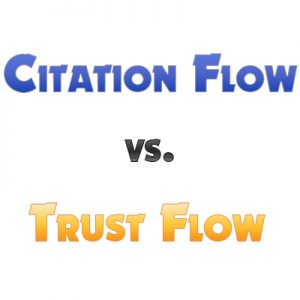The once ironclad way to determine the relevance of a website/page, page rank, has long since become irrelevant and died off. The issue was that it become too easy to fake using backdoor linking practices such as using a 301 redirect to a much higher PR website so that the linking to site would adopt that PR. Spammers used it to leverage their weak and spammy sites and turn them into something of a commodity either through selling links from the site or the domain itself.
has long since become irrelevant and died off. The issue was that it become too easy to fake using backdoor linking practices such as using a 301 redirect to a much higher PR website so that the linking to site would adopt that PR. Spammers used it to leverage their weak and spammy sites and turn them into something of a commodity either through selling links from the site or the domain itself.
Fortunately, for the last few years Majestic has stepped up and used its site scanning tools to come up with a new industry standard for SEOers which is the citation flow and trust flow metrics. These are simple scores from a scale of 0-99 which represent two very important metrics in determining the relative authority of a website with Google being the only site to score a 99.
The great thing about citation and trust flow is that they are very difficult to game or influence, making them reliable representations of the relevance of a site.
But what is the difference between citation flow and trust flow? Let’s break down the two right now and address citation flow vs. trust flow.
Citation Flow Vs. Trust Flow
Citation Flow
Citation flow is a numerical prediction of how influential a site is based on the number of sites linking to it. It stands to reason that the more websites linking to a particular website, the more trustworthy and authoritative that website appears to be. 
If your website is getting all of its links from the same one or two websites, then that’s an indication that not only is your content not being shared by a lot of people (not good) but also that you are influencing those links which you are getting. Typically a webmaster doesn’t link to the same other webmaster’s website constantly, and certainly not exclusively.
Vary your link profile and aim to earn links from sites across the internet in various platforms so long as they’re relevant to yours.
It goes without saying but I’ll mention it just the same: the number of your citation flow isn’t representative of the EXACT number of domains linking to your site. It’s a relative number which is relative (duh) to how your site stacks up against every other site on the internet which Majestic has analyzed (most of them).
So with 150 unique websites linking to your website, you might have a “10” as your citation flow number. With 50 unique websites linking to your website, you might have a “5” as your citation flow number. These are just examples and it’s not a precise correlation of course, but the point is that more unique website links are better than less (duh, again).
Trust Flow
Trust flow is a touch more subjective than citation flow in that it works to predict the quality of those backlinks, specifically by checking the authority of the sites which are linking to the domain you’re checking. 
For instance, if the site you’re checking has received the majority of its links from websites which are authority sites which receive a lot of traffic and high quality backlinks themselves, then the trust flow of the site you’re checking is going to be higher than if the site had no backlinks or thousands of links from spammy/weak/irrelevant websites.
So essentially, a domain’s trust flow number from Majestic takes into account the respective trust flows of every site linking to it and from that it finds a relative number for that site while taking into consideration again every other site on the internet Majestic has analyzed (again, most of them) to rank it accordingly.
If these two metrics sound familiar, it’s the exact makeup of Google’s self-professed top ranking factor: backlinking. Both metrics are directly connected with how many sites are linking to your website and the perceived quality of those sites judging by their own unique citation and trust flow numbers.
Citation Flow Vs. Trust Flow For Spam Checking
We can use citation flow vs. trust flow to make some interesting inferences when we’re in the market for an expired domain. Majestic’s citation flow and trust flow stats are invaluable to not only judging how valuable a site is but how likely that domain is a spam swamp and should be avoided like the plague.
A bit of common sense is all you need to use citation flow vs. trust flow for spam checking a prospective expired domain purchase.
If the citation flow to trust flow ratio is way off, then that’s an indication that that site has been spammed to death likely using a link building tool. What you especially want to pay attention to is the trust flow number when comparing the two.
For a spammy domain, you’re likely to see a citation flow in the double digits but if the trust flow is next to or at zero, then it’s a clear message to steer clear of that domain. It may have hundreds or thousands of links pointing to it, but if those links don’t pass the trust flow test, then don’t waste your time.
